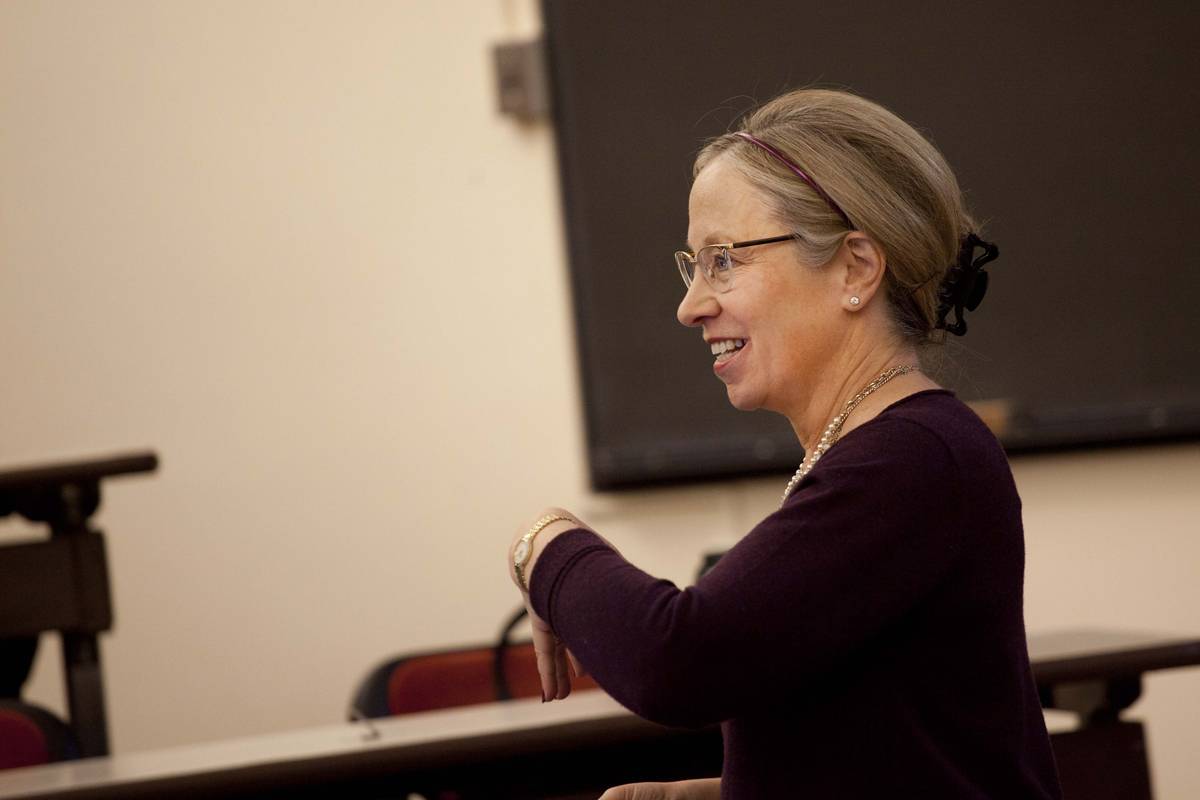For Mary Munter, A Career of Firsts
The management communications professor, who retired earlier this year, paved the way for future female faculty members at Tuck.

The management communications professor, who retired earlier this year, paved the way for future female faculty members at Tuck.
When Mary Munter arrived at Tuck in 1983, the school had half as many students and faculty as it does today, far fewer female professors, and the campus ended at Stell Hall. “And you could always find a parking space,” laughs Munter.
In her 41 years as a management communication professor—Munter taught at Stanford’s Graduate School of Business for seven years prior to Tuck—she’s seen more than just the expansion of Tuck’s physical footprint and community. Munter has seen Tuck’s female faculty grow in both numbers and strength, and she has witnessed the evolution of a field in which she is an acknowledged expert.
Munter, who retired earlier this year, was the first woman to teach in the core at Tuck long-term, the first to serve as associate dean, and the first female faculty member to teach in and direct programs for Tuck Executive Education. In every sense, Munter helped pave the way for future female faculty members at Tuck. “As of the late ‘90s, there were zero tenure-track women at Tuck. Today, there are 11,” she says.

Mary Munter in the late 'Seventies.
At Tuck, Munter co-taught the core Management Communication course for more than 25 years, as well as Advanced Management Communication, Advanced Presentation Skills, and several others. Along the way, she helped countless students become more confident and effective business communicators.
And while the tools have changed—Munter recalls a time when presentations were delivered standing next to a flip chart—the fundamentals of the field have not. “You still have to keep your audience in mind and be clear and organized,” she says. “Good writing is good writing. Good speaking is good speaking.”
Munter’s impact and influence extends beyond Tuck to the field of management communication itself. The Association for Business Communication, on whose board she served three terms, has recognized her contributions with multiple awards over the years. She co-founded the Management Communication Association, led seminars and workshops for over 90 companies and organizations, and served as a visiting professor at four international universities.
Munter’s scholarly work included synthesizing many business communication concepts that today are widely accepted and used in her field and in related areas such as organizational behavior. High Skim Value, for example, a concept and term Munter created, is now a widely accepted principle for formatting emails, slides, and memos so they can be more easily read.
Munter’s influential “Guide to Managerial Communication,” a guidebook offering tips on business writing and speaking, was the first book to take a strategic rather than formulaic approach to management communication. Now in its 10th edition, it’s used at many leading business schools.
Munter grew up in Southern California in a college town “very much like Hanover” and her California roots are what bring her back to the Golden State in retirement. She plans to audit courses in art history at a local college and travel as much as she can—to date, she has visited some 52 different countries. Munter also has a secret passion: blogging. With Delightful Reads, she reviews novels that are a “pleasure to peruse.”
And while she’s looking forward to this next chapter, she admits that nothing can replace leading a classroom full of eager students. “You know what I’ll miss the most? Seeing lightbulbs go off above students’ heads. That’s when you know they get it. And when you’re teaching communication, you can literally see it when their behavior improves.”